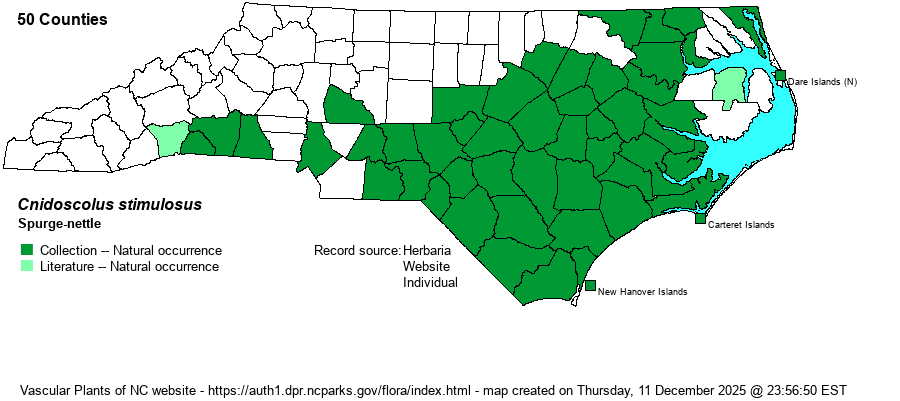| Author | (Michaux) Engelmann & A. Gray | |
| Distribution | Coastal Plain, Sandhills, and southern Piedmont -- west to Polk County and north to Rowan and Franklin counties. An iNaturalist photo from the Mountains, in Henderson County, is clearly correct; it is mapped below, though the species is not known from the Mountains of NC, SC, or GA on Weakley's (2024) map; it does occur in northern AL, however.
Mostly Coastal Plain, southeastern VA to southern FL and southeastern LA. Records from KY are from along railroads and are probably adventive. | |
| Abundance | Common in the Sandhills and in other sandy soils eastward, in the southern half of the Coastal Plain. Fairly common in the central part of the province, but mostly uncommon or infrequent in the northern portions. Rare and local in the Piedmont part of the range. | |
| Habitat | Dry to xeric sandy soil of Longleaf Pine-Wiregrass uplands, pea swales, sandhills, Carolina bay rims, stable dune barrens, and sandy powerline clearings; in the Piedmont in sandy/dry woodland openings and on the "south bank of Broad River" in Cleveland County. |
| Phenology | Flowering and fruiting late March - early September. | |
| Identification | Spurge-nettle is immediately recognized by its broad, deeply 3-lobed, and irregularly toothed leaves and its large, bright white flowers with 5 petal-like sepals (true petals are absent). Virtually the whole plant is covered with short stinging hairs, potent for up to half an hour in some people. This is an easily found species in much of the Coastal Plain and Sandhills, impossible to overlook. | |
| Taxonomic Comments | None
| |
| Other Common Name(s) | Bull-nettle, Tread-softly. Often known as Tread-softly, at least in the Carolinas, but most references/websites prefer to use Spurge Nettle (or Spurge-nettle). As it is not a member of the nettle family (Urticaceae), it is best to hyphenate the name. | |
| State Rank | S5 | |
| Global Rank | G5 | |
| State Status | | |
| US Status | | |
| USACE-agcp | | |
| USACE-emp | | |

